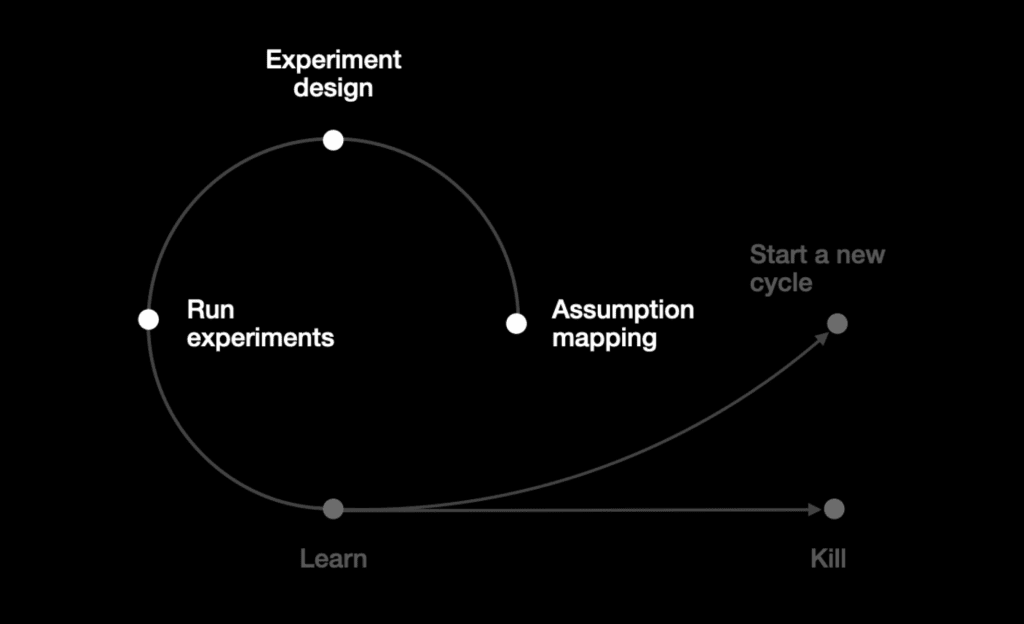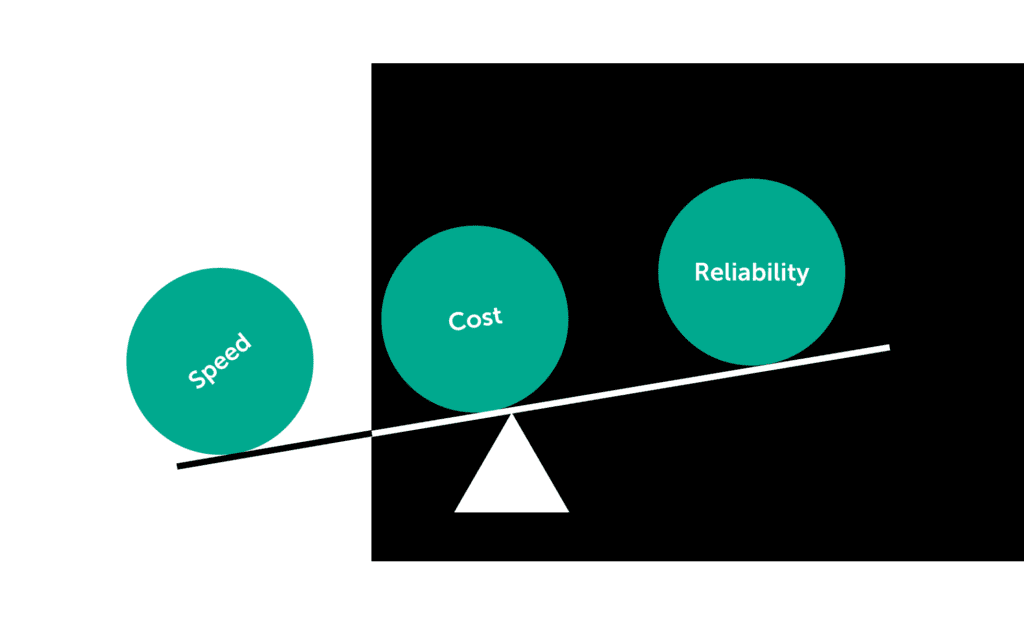Key takeaways
Having reliable evidence before you make any big investments in a new venture can be a lifesaver in terms of reducing risk and saving valuable time, money, and resources. After all, who wants to put a product into the market only to find out months later that it isn’t commercially viable? That’s where early validation comes in.
In today’s fast-moving and highly uncertain corporate landscape, validation works like a flashlight in the dark for entrepreneurs building new ventures. It enables you to move forward with proof that:
- Customers will buy your product or service.
- The concept could be profitable.
- It’s feasible to build and bring to the market.
- It reflects the brand’s ethical values.
So how can you leverage the power of lean experimentation to validate new ideas and concepts?
Read on to learn about the lean experimentation method, how to map your assumptions and the four questions you’ll need to ask to design your experiments. We’ve even provided links to our own tried and tested validation resources.
Explore our global list of corporate ventures with over 200 examples you can sort by business model, industry, parent company and more!
What is the lean experimentation methodology?
Simply put, lean experimentation is a highly efficient way to get your venture related questions answered. Its main goal is to decrease your blindspots and enable you to move forward based on concrete evidence, giving you some reliable foresight and significantly reducing any risk.

In contrast to traditional R&D, the lean experimentation method is designed to be quick and low cost, enabling you to adapt fast and get your product to the market before any competitors do.
Think of it as a three-step process in which you’ll design the experiment, test your assumptions and gather your insights. Depending on the outcome, you’ll know whether to make adjustments, move forward or cut your losses and move on to better options.
Mapping out your assumptions.
The first thing you need to do is figure out which assumptions you want to test, e.g.:
- Our chosen target audience will buy the product.
- Our branding strategy creates the desired response among our customers.
- Our business model is profitable.
- Our audience’s values are reflected in our offering.
Once you know your assumptions, you can move on to the next step, which is mapping them ou. The process will enable you to prioritise and find out which ones are crucial, non-crucial, known or unknown. umptions are the riskiest and should be tested first.
The next step is to design the experiments to get the evidence you need to take your venture forward.
How to design an experiment.
The best way to design your experiment is by asking yourself the following four questions:
Question 1: What type of assumption are you testing?
Each one of your assumptions will be related to the desirability, feasibility, viability or responsibility of your offering, e.g.:
- Desirability: Do customers need and enjoy this product?
- Feasibility: Do you have the operational capabilities to provide the product?
- Viability: Do you have a profitable and sustainable business model?
- Responsibility: Does the concept address social and ethical concerns?
Some experiments are better suited to test desirability, while others work best for feasibility or viability– our list of lean validation experiments covers them all. Make sure you validate all four aspects across the entire assumption validation effort.
Question 2: How much evidence do you already have for a specific assumption?
If you don’t have much initial evidence about a particular assumption, your goal should be to get just enough data to point you in the right direction (e.g. is this worth further testing?). For these types of assumptions, cheap and easy is the way to go.
It’s normal to know more about some assumptions than others. A good rule of thumb is to put more effort (e.g. more complicated and expensive experiments) into the assumptions you feel strongly about.

Question 3: What type of data will give you the right insights to validate the assumption?
Knowing the type of data you want beforehand will go a long way in helping you design your experiment:
- Qualitative data: delivers insights on how your customers feel about the product, how they interact with it, how context affects their behaviour, etc.
- Quantitative data: delivers numerical insights like how many people hit your “buy” button, how they rated your product on a scale, or what percentage chose a feature, etc.

Qualitative data is better for understanding “why” your customers make certain choices, while quantitative data is better suited for “calculating” how you could transfer your findings to a larger group.
Question 4: Which aspect of the concept are you trying to validate?
Figuring out which aspect of the concept you’re trying to validate will go a long way helping you choose an experiment.

The next steps.
Once you’ve done the preparation work described above, you’ll have all the information you need to start choosing your experiments. To help you do that, we’ve created a practical and easy to use guide listing over 50 tried and tested experiments used by our own expert Venture Builders.
You’ll find everything from Smoke Testing, to Scoping Sessions, to Stakeholder Mapping, just to name a few. You’ll also find out when to use each experiment, the average cost of running it and some pro tips we’ve discovered during our years in the field. Happy validating!
____________
Are you looking to validate a new concept or solution? Power every step of your venture-building journey with real customer data to find the right product-market fit, price point and features.
50+ Lean Validation Experiments
Test ideas faster, validate smarter, and de-risk ventures at every stage with these real-world, battle-tested experiments.









